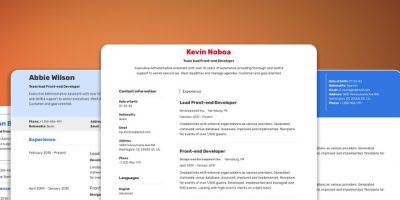Life is not perfect, and neither are your projects. That’s why you should always have a contingency plan in place as soon as you start planning every other aspect of an assignment. Contingency plans work like insurance. You don’t expect to use it, but having one is indispensable if things don’t go as planned, which is likely at some point and to a certain degree.
To make a good contingency plan, one must understand all the aspects and risks involved. The more you anticipate possible scenarios in which things don’t go according to plan, the more prepared you will be to deal with adversities and get back on track.
That’s why it pays to have not just a “Plan B” but also a “Plan C,” “D,” and even “E.” They can help you save a lot of time and money, not to mention reduce stress when faced with adversity.
These plans are especially useful for new companies, where the odds of things not going as planned are higher. Being ready for this can make the difference between a long and successful journey, and a short, frustrating one.
Identify what can go wrong
The first step to making an efficient contingency plan is identifying everything that can go wrong. The trick here is to be pessimistic and list all the worst-case scenarios that can happen. Try to divide them into categories – for example, politics. What will happen if a specific public law changes and the whole project has to be adjusted to fit the new legislation? Try to apply this thinking to every aspect of the project that crosses your mind.
Think about possible economic crashes, human errors, natural disasters, and so on. Consider different scales of aggravation, from major problems like an essential supplier suddenly going missing, to the mishandling of a small task in the overall process.
Working in a group is best here, with people from different areas identifying a wide range of scenarios. It is also advisable to rank these risks in order of importance. For example, a sudden drop in the company’s reputation, and budget cuts: which is more threatening for your business? Address these issues, and prioritize the most relevant ones.
Get your action resources ready
Could a sudden change in regulation in your area be critical to the project’s health? Be sure to have a solid legal team on your side! Or are external perceptions of the company essential to how things will flow? If so, you should invest in a public relations team that stands ready to ensure things run smoothly in this department. Having identified all the risks to your project, make sure to have people on hand who can capably respond to each one.
Create a set of procedures for each scenario
Every Japanese student knows what to do when an earthquake hits Japan, which happens often. Their response is immediate and conducive to overall safety, and your team should respond in the same way when something goes wrong. To make sure this happens, think about the best way to deal with each misfortune in turn, and get your procedures ready in advance.
Consider who will be assigned to deal with each element of the problem (as per the previous heading), which actions should take place and in what order. What will your first immediate reaction look like? How long will it take? Depending on how the contingency plan begins in practice, how will this alter the next steps?
Those are all essential elements to bear in mind. One tip is to create a decision tree that maps out the appropriate answer for each scenario. In doing so, no one will be surprised, and your team will know how to act on a number of different levels. The more intricate your preparations, the more ready you will be.
Make sure everyone is aware of the contingency plan
Imagine that a building is on fire. The best thing to do is to remain calm and make an organized, peaceful exit, since chaos in these situations can lead to panic, and things can go terribly wrong.
But what if half of the people in the building act calmly and the other half don’t? Chaos will probably ensue, despite the fact that some knew what to do. So make sure that everybody knows the plan and how to execute it, before it’s needed.
Leave space for adaptation
Even if you put a lot of thought into the agenda, sometimes things take a surprising turn. That’s why it’s important to leave room for new routes in the middle of a crisis, if required. But even here, you can plan ahead by designating someone to lead this shift. Your contingency plan should make clear who is best suited to make this choice, depending on the scenario.
Always update
Don’t just create the plan and leave it untouched. Go back to it from time to time and reevaluate it as required. This can be done collectively, with several people offering their insights and strengthening a contingency plan that checks all the boxes.












Comments